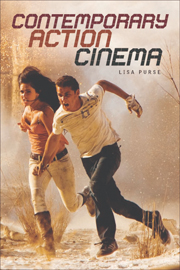Book contents
- Frontmatter
- Contents
- Illustrations
- Acknowledgements
- Introduction: ‘Where are we, and how did we get here?’
- 1 Narrative and the action film
- 2 The action body
- 3 The action sequence
- 4 Action women
- 5 Action men
- 6 Race in the action film
- 7 Homosexuality in the action film
- 8 Action cinema after 9/11
- 9 The ‘European connection’
- Afterword
- Bibliography
- Filmography
- Television Series
- Index
8 - Action cinema after 9/11
Published online by Cambridge University Press: 05 August 2013
- Frontmatter
- Contents
- Illustrations
- Acknowledgements
- Introduction: ‘Where are we, and how did we get here?’
- 1 Narrative and the action film
- 2 The action body
- 3 The action sequence
- 4 Action women
- 5 Action men
- 6 Race in the action film
- 7 Homosexuality in the action film
- 8 Action cinema after 9/11
- 9 The ‘European connection’
- Afterword
- Bibliography
- Filmography
- Television Series
- Index
Summary
There has been much debate about whether Hollywood filmmaking changed as a result of the terrorist attacks on 11 September 2001. The images of the attacks on the two towers of the World Trade Center, of impacts, explosions and the scale of destruction captured in bright sunlight by home video and television cameras, were uncomfortably reminiscent of numerous fictional scenes in Hollywood action cinema and disaster movies. The experience of people watching the events unfold in real time on their television sets was one of horror but also of disturbing recognition as they were confronted by images that, in a different context, had provided many of them with pleasure and entertainment. The desirability of violent Hollywood spectacle was suddenly called into question in the most perturbing of ways, prompting calls for a reconsideration of what kinds of entertainment images should be screened in movie theatres. Such reconsideration also seemed fitting in the context of wider newsmedia and political responses to 9/11, which asserted repeatedly ‘that the world had been irrevocably changed’ (Mulvey 2006: 23). David Holloway has argued that this idea of a changed world was mobilised more for its political utility than its accuracy; that it was used to defend the ‘“Bush Doctrine” of pre-emptive war, unilateral policy-making and “regime change” in “rogue states”’, while being inaccurate because the 9/11 attacks were ‘just one incident in a much bigger, transnational Islamist insurgency’ that had been building throughout the 1990s (Holloway 2008: 4).
- Type
- Chapter
- Information
- Contemporary Action Cinema , pp. 150 - 169Publisher: Edinburgh University PressPrint publication year: 2011



